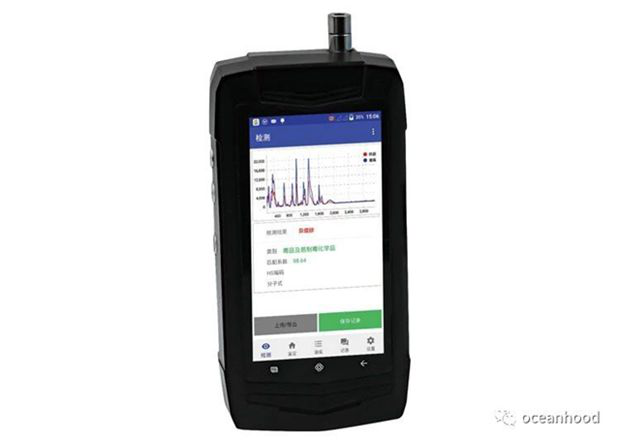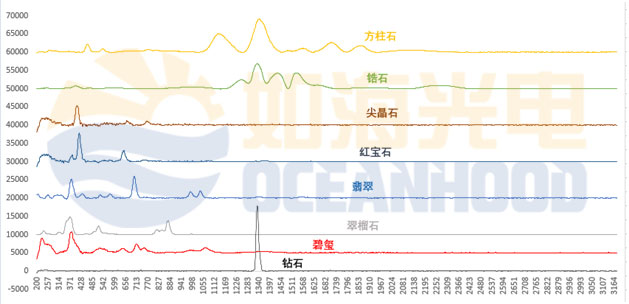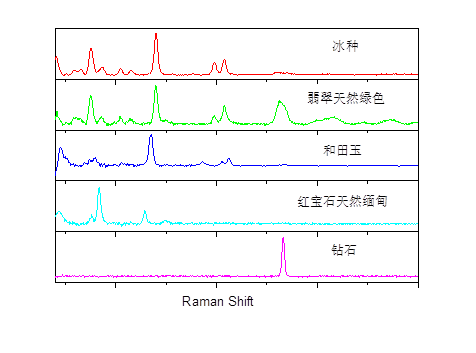|
簡(jiǎn)體中文|
English| Launch:2019-08-09 |
The introduction
With the progress of science and technology, jewelry synthesis technology has become increasingly mature. For those engaged in jewelry trading and testing, it is virtually more difficult to detect and identify the authenticity, grade and grade of jewelry. Since the discovery of jewelry, people have been studying jewelry detection methods continuously. From the beginning of naked eye recognition to today's development with the help of more analytical instruments, jewelry detection methods have undergone tremendous changes.
In the past jewelry identification work, gemstone microscope and refractometer are mainly used to detect tools, which are mainly based on the optical properties of minerals to make qualitative understanding and identification of jewelry. However, due to the very similar light properties of some gemstones of different types, it is impossible to identify the real and fake jewelry accurately by common methods. In addition, the rapid development of jewelry synthesis technology and optimization technology makes it more and more difficult to distinguish synthetic jewelry from natural jewelry.
In the process of jewelry detection, the commonly used technical means mainly include: uv visible absorption spectrum, Raman spectrum, infrared spectrum, electron probe technology, X-ray diffraction technology and scanning electron microscope analysis technology, etc.
Raman spectrum is a kind of scattering spectrum which occurs in the vibration of material molecules. By analyzing the Raman spectrum of jewelry, the rotational energy level of the vibration of molecules inside jewelry can be known, so as to identify and analyze the categories, grades and authenticity of jewelry.
The experiment part
1. experiment preparation
100 pieces of jewelry, diamond and gem standard samples, 6 jewelry prediction samples, EVA3000Plus handheld Raman spectrometer and probe accessories, laptop.
2. Experimental apparatus
EVA3000Plus, Raman solid detection accessories.
Portable Raman spectrometer EVA3000Plus produced by Shanghai ruhai optoelectronic technology co., LTD
Instrument
parameters:

| Spectrum range | 200cm-1~3200cm-1 |
| Solution | 4~13cm-1 |
| Peak wavelength | 785±0.5nm |
| Output power | 0~500mW |
| Integration time | 1ms~10s |
| Probe working distance | 7.5mm |
3. experimental method
Step 1: take out 100 standard samples of gemstones, arrange them in sequence, and count the quantity. Prepare a set of empty boxes where samples are placed after testing.
Step 2: put the solid accessory cap on the handheld Raman spectrometer of EVA3000Plus and measure the extracted gem samples. Before the measurement, please record the name and number of the gem. After the measurement, save the spectral map on the equipment, and the name should be consistent with the number and name of the gem.
Step 3. Test 100 standard samples successively and establish a standard gem sample database.
Step 4. Take out 6 jewelry samples to be tested, measure them successively, match with the database, and check the database.
Step 5. Restore and place all jewelry according to classification and end of the experiment.
Note: small samples of diamonds mainly prevent samples from falling and losing.
Results and discussion
The experiment tested the data of 100 standard samples and 6 samples to be predicted, as shown in the figure below, and obtained the Raman spectrum of jewelry. The following figure shows the Raman spectral similarity between the sample to be tested and the standard sample library (spectral smoothing, baseline deduction, normalized data processing) :

Conclusion one:
As can be seen from the figure above, the similarity between sample 1 to be tested and standard quartzite sample is as high as 91.5%, and that between sample 2 to be tested and standard quartzite sample is as high as 85.6%, so it can be judged that sample 1 to be tested belongs to quartzite and sample 2 to be tested belongs to peridot.
Choose 8 categories of jewelry Raman spectra from 100 standard samples for comparison, as shown in the figure below:

Conclusion two:
From the above figure, the peak positions of Raman spectra of different types of jewelry are significantly different, and it is feasible to identify different types of jewelry by using the EVA3000Plus hand-held Raman spectrometer.
Jewelry database
Currently, there are a total of 123 gem samples database, including 95 kinds of samples including jade and diamond.


